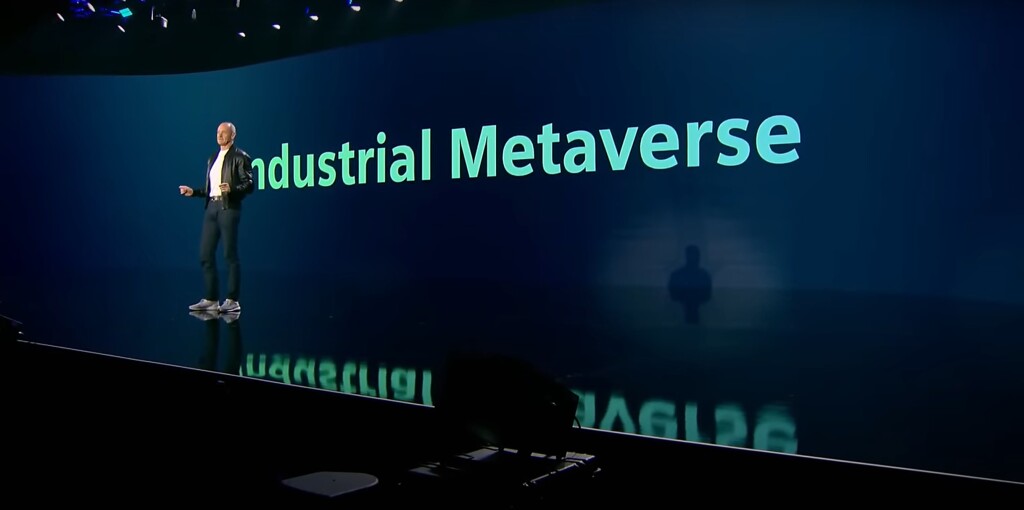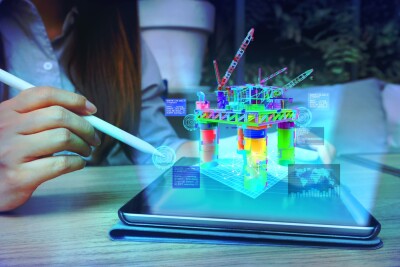At this time a couple of years ago, the idea of a metaverse dominated conversations and strategies throughout the tech industry. With Facebook shifting their entire company strategy – including, eventually, changing their name to Meta – towards this idea, it was clear to everyone that a virtual, 3D space was the future of the online experience. Of course, in the time since that excitement has gone away, with a large degree of that energy now being placed towards artificial intelligence, and more specifically generative AI. With the impending release of the Apple Vision Pro there is some momentum drifting back towards mixed reality, and by extension the metaverse, but commercial interest is still mostly quiet.
With that being said, there is growing momentum towards an offshoot of the metaverse idea which took hold of the greater public, focusing more on industrial use cases. This momentum was demonstrated, somewhat ironically, at this year’s Consumer Electronics Show (CES), perhaps the biggest annual technology conference in the United States. This year’s CES was held in Las Vegas this week, and as always there was a plethora of new products introduced in a number of different sectors. This year, focus towards a connected industrial metaverse took center stage and pointed towards excitement for this idea.
When we say it took center stage, we mean that literally, too. On Monday, the first day of the show, Siemens CEO Dr. Roland Busch gave a keynote address which included plenty of talk about the industrial metaverse, saying it will “redefine reality and transform the everyday for everyone.”
Siemens in particular is one of the companies at the center of much of this development, particularly with their Xcelerator ecosystem. Just last year, in fact, NavVis announced a collaboration with Siemens for a new Building X platform which will be powered by NavVis’ IVION. As a result of this innovation, companies like Siemens envision a not-too-distant future in which companies and organizations in manufacturing, infrastructure, transportation, and other major industries interact in a virtual environment built around digital twins.
While a lot of this is still high-level, future-looking conversation, there are developments – including the aforementioned collaboration between Siemens and NavVis – that are driving this idea forward. This includes another announcement made this week by Sony, who previewed a new “spatial content creation” system that includes a mixed reality headset. Unlike other entrants into this market, Sony is marketing this headset directly towards enterprise use cases, and partnering with Siemens to make it happen. The system, which they say is a solution for “immersive design and collaborative product engineering,” is expected to be available later in 2024.
The idea of an industrial metaverse has always made sense as the biggest industries around the world evolve. Recent years have seen large industries become more globalized, which is resulting in more moving pieces, more data, and generally more complex problems. New challenges require new tools to help solve them, and the explosion of AI is helping to accelerate development of these new tools.
Simply put, the grand idea of an industrial metaverse is to provide a digital space for organizations within these industries, whether it be a department of transportation, a shipping company, or a manufacturer. These digital twins can be used for their own use, simulating new processes and helping ensure facilities are well maintained, while also being connected to one another. Of course, private data would remain in-house, but collaboration between multinational companies becomes much easier within a digital space that can provide relevant real-time information.
There are still barriers to getting this kind of virtual environment set up in full force. Headsets play a role, as made evident by Sony’s announcement, but there is still hesitance around wearing headsets throughout a workday, or even for a significant piece of it. Furthermore, while the technology exists to make these accurate digital twins, much of the tools remain expensive and complicated, meaning they’re inaccessible to those outside of the top tier of a given industry.
But the momentum is growing. Many of us now block out any mention of the metaverse after the speedy rise and speedier fall of the consumer-related idea, but the industrial metaverse is here to stay, and we may look back at this year’s CES as the moment when that reality became clear.







